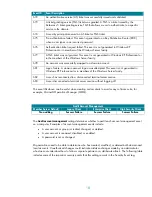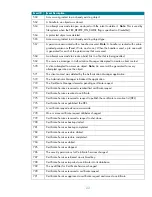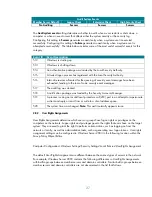
15
Reset Account Lockout Counter After
Domain Member
Default
Legacy Client
Enterprise Client
High Security Client
Not Defined
30 minutes
30 minutes
15 minutes
The
Reset account lockout counter after
setting determines the length of time before the
Account
lockout threshold
resets to
0
and the account is unlocked. If the
Account lockout threshold
setting is
defined
, then the reset time must be less than or equal to the value for the
Account lockout duration
setting. In coordination with the other values configured as part of this guide, leaving this setting at its
default value, or configuring the value at an interval that is too long, could make the network domain
environment vulnerable to an account lockout DoS attack. Without a policy to reset the account
lockout, administrators would have to manually unlock all accounts. Conversely, if there is a
reasonable time value for this setting, users would be locked out for a set period until all of the
accounts are unlocked automatically. The recommended setting value of 30 minutes defines a time
period users are more likely to accept without resorting to the help desk. Leaving this setting at its
default only opens the network domain up to an account lockout DoS. This guide recommends setting
the value to 15 minutes in the High Security environment.
2.6
Domain Level: Hardening the Domain Infrastructure Kerberos Policy
Kerberos policies are used for domain user accounts. These policies determine Kerberosv5 protocol-
related settings, such as ticket lifetimes and enforcement. Kerberos policies do not exist in the local
computer policy. Reducing the lifetime of Kerberos tickets decreases the risk of an attacker stealing
passwords and then impersonating legitimate user accounts. However, maintaining these policies
increases the authorization overhead. In most environments the default values for these policies should
not be changed. The Kerberos settings are include in the Default Domain Policy and enforced there.
2.7
Domain Level: Hardening the Domain Infrastructure Security
Options
There are two policies in Security Options that behave like account policies and should be considered
at the domain level. These security options can be configured within the Domain Group Policy at the
following location:
Computer Configuration\Windows Settings\Security Settings\Local Policies\Security Options
Microsoft Network Server: Disconnect Clients When Logon Hours Expire
Domain Member
Default
Legacy Client
Enterprise Client
High Security Client
Not
defined
Enabled Enabled Enabled
The
Microsoft network server: Disconnect clients when logon hours expire
security setting determines
whether to disconnect users who are connected to the local computer outside their user account’s
valid logon hours. This setting affects the server message block (SMB) component. When this policy is
enabled, it causes client sessions with the SMB service to be forcibly disconnected when the client’s
logon hours expire. If this policy is disabled, an established client session is allowed to be maintained
















































